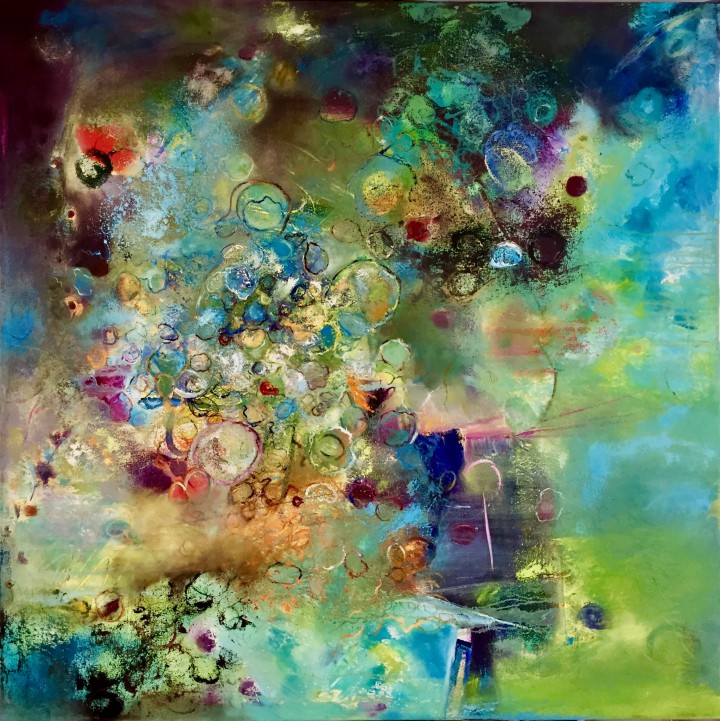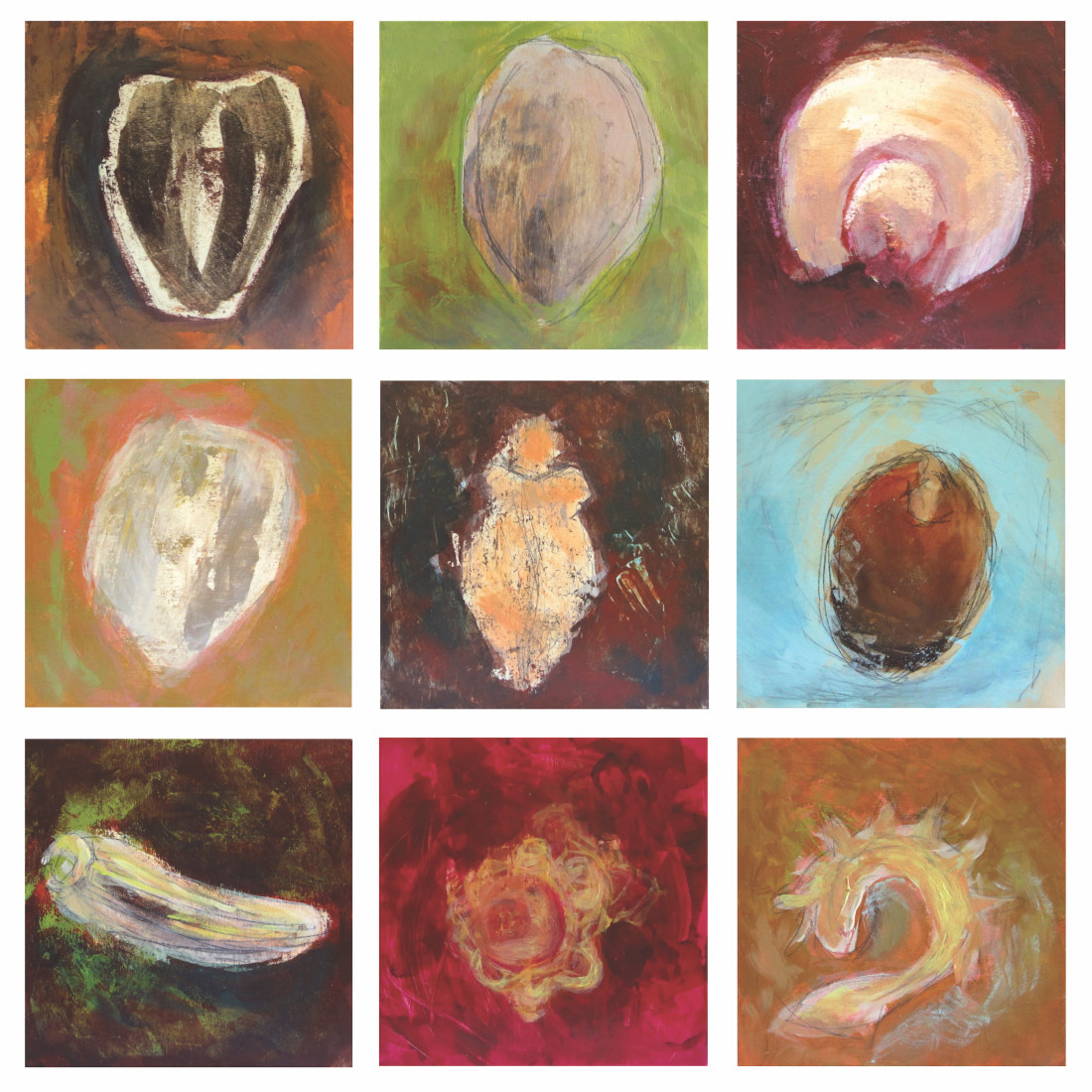“When Strangers Meet, They Dance,” an oil painting by local artist Deanna Chilian, can be described as a thunderstorm of color. It’s loose, nonrepresentational, visually striking and … inspired by a fungus?
“Lichen, actually,” Chilian clarifies.
Lichen is a composite organism made of algae/cyanobacteria and two fungi. It grows about anywhere and comes in 20,000 different shapes, sizes and hues. Since it’s sensitive to sulfur dioxide, a key ingredient in smog, scientists also use it as a barometer of climate change. “Lichen is a fascinating underdog of the natural world,” says Chilian, who noticed domestic subtypes while hiking in Colorado. For Man and Nature: Pathways to Renewal — a group art exhibit — she has emulated lichen’s vivid appearance (some species are bright yellow, orange or red) and tactile interest. “I only had a few months,” she says. “But I wanted to try for that crunchy, layered texture.”
A reception for the Asheville Area Arts Council-hosted exhibition takes place Friday, Sept. 1, at the Refinery Creator Space.
Chilian wanted her three paintings — “When Strangers Meet, They Dance,” “It Takes Three to Tango” and a currently untitled work — to challenge the man versus nature struggle romanticized in popular culture. “I think this whole ‘man against the world’ thing is over. We’re going to find more success and vibrancy by coming together in unity,” Chilian says. “To do so, we need to adopt a different perspective.”
Dialogue is the hope for the opening reception when seven artists — Chilian, Chuck Hunner, Julie Miles, Roger Munch, Leslie Rowland, Molly Sawyer and exhibition curator Joseph Pearson — will come together to speak about their work and its connection to nature. “This group has extensive knowledge of environmental issues,” says exhibitions manager Mamie Fain. “They’re passionate about inspiring conversations regarding man’s impact on the planet, and they’re concerned about the direction we’re heading.”

Miles, for instance, is presenting pieces inspired by gardening. Her “Seed Portraits” offer a refreshingly straightforward look on fading food systems. Using a subdued style, she has painted heirloom seeds on 45 6-inch-square panels. Most seeds (sunflower, squash, eggplant) are common, but others are quirky. “Some of my gardener friends have turned me on to things like Eye of the Goat bean,” says Miles. An heirloom runner, “ojo de cabra” has a strange coloration that resembles a goat’s rectangular pupil.
But “Seeds Portraits” focuses on the bigger picture, too. Arranged side-by-side in a 9-foot-tall installation, the portraits speak on the effects of hybridization and genetic modification. “I want viewers to feel small in front of a seed,” says Miles. “It’s an interesting place to be, considering the power that seeds hold.”
She traces this passion for sustainable growing back to her grandfather. Born in 1901, he witnessed agriculture evolve with the popularization of herbicides and pesticides. Sticking close to his old ways, he used natural fertilizers. Miles’ acrylic painting, “Extracting the Peppermint Oil,” illustrates him doing just that, using only a bucket and steam. With cool colors and soft edges, the artwork feels intimate: Viewers can almost smell the brisk aroma.
Comparatively, “12,480 Days” provides an aerial perspective of Miles’ grandfather’s 34-year career. For each day that he farmed, the artist carved a line into wood panels. “It was a meditative process, thinking about him going into the field each day,” she says.
Artists like Rowland, owner of London District Studios, see art as a way of waking America up. Rowland says that AAAC’s show comes at a time when “the dismissal and bastardization of science by the current administration should be terrifying all of us.” Ergo, her piece, “Connected,” depicts a butterfly made of wildflowers, blue sage, thistle, poppy, dianthus and dandelion. It breaks from her mixed-media art, using detail to comment on threatened pollinators. “Our natural world is under siege by industries that place more value on what can be extracted from our lands than they do on the functioning ecosystems themselves,” Roland says.
Here’s the thing, though: “Realizing all these problems can seem monstrous,” admits Chilian. For her, art is the only way to face issues like animal extinction, rising sea levels and shifting temperatures.
“Art creates a bridge when there might be too many words,” she says. “It provides something concrete for the abstract and something abstract for the concrete.”
WHAT: Man and Nature: Pathways to Renewal
WHERE: The Refinery Creator Space, 207 Coxe Ave., ashevillearts.com
WHEN: Reception Friday, Sept. 1, 5-8 p.m. The exhibition will remain on view through Friday, Sept. 22




Looking forward to seeing the exhibit – especially the new works by Julie Miles & Deanna Chilian, two of my former studio mates.